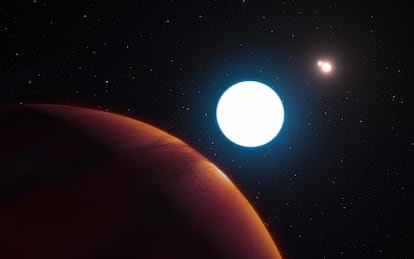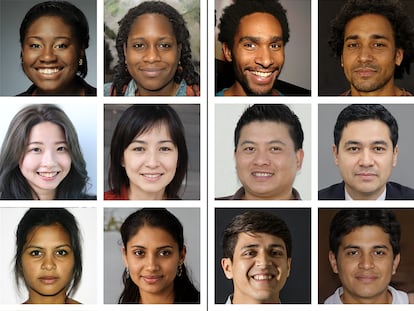
Yes, there are stars being born right now. To find out what life stage each star is in, we cannot follow one during its entire lifetime, because stars can live for billions of years. What we can do is observe the areas in which stars’ births occur. In these areas of our galaxy, we can see stars in all phases, from before they are born to the advanced stages of their evolution. These star-forming regions, or stellar nurseries, are dense clouds of dust and gas. We cannot observe them with optical telescopes. For these areas, we have to use radio telescopes, because a radio signal can pass through the clouds.
Star formation theories explain the different phases a star goes through when it is forming. Detecting stars in these different phases has helped confirm this theory.
A star is born when matter condenses in a cloud of gas and dust. At a certain density, the temperature increases until it reaches the point at which nuclear reactions begin. That is when the star has formed. Jets of matter will appear perpendicular to the newly formed star, which will have a disk around it. Since we can detect the radiation from the structure’s molecules and atoms, we can observe the protostars at this early stage. We can also observe stars when the jets of matter have practically disappeared and when planets begin to form in the disk around the star.
Stars’ formation processes vary depending on their size. Large stars and small stars can be born in the same star formation cloud, and we do not know what makes each individual star end up a certain size.
The process of star formation lasts several million years, and it always Stars always form inside those stellar nurseries out of the matter contained in the clouds.
Star birth occurs within galaxies, where matter clumps together into these assemblages of stars, gas and dust. We are only able to detect the formation of stars in our galaxy, but we know that the Universe holds younger galaxies in which there are many stars in formation. In older galaxies, the gas that initially existed is already part of the stars that have formed, and so very few new stars are born. In our own galaxy, the Milky Way, there are still many stars information because there is still a lot of gas and dust remaining.
The life of stars is a cycle. Stars form, are active for a few billion years and then die. During their active life, they transform the hydrogen that originally composed them into other chemical elements. Towards the end of their lives, they expel the external material that formed them. Someday other stars will form from that material. New stars are born from the remains of dead stars. That process brought human beings and our entire world into existence, because at the beginning of the cosmos the only thing there was hydrogen, a little helium and a minimal amount of beryllium and lithium. All other chemical elements have since been produced inside stars. When our Sun goes extinct, the atoms that make us up today will become part of new stars and maybe even other planets.
Olga Suárez is an astrophysics researcher and head of scientific outreach at the Côte d’Azur Observatory, Nice.
Question sent via email by Francisco Millás García
Tu suscripción se está usando en otro dispositivo
¿Quieres añadir otro usuario a tu suscripción?
Si continúas leyendo en este dispositivo, no se podrá leer en el otro.
FlechaTu suscripción se está usando en otro dispositivo y solo puedes acceder a EL PAÍS desde un dispositivo a la vez.
Si quieres compartir tu cuenta, cambia tu suscripción a la modalidad Premium, así podrás añadir otro usuario. Cada uno accederá con su propia cuenta de email, lo que os permitirá personalizar vuestra experiencia en EL PAÍS.
¿Tienes una suscripción de empresa? Accede aquí para contratar más cuentas.
En el caso de no saber quién está usando tu cuenta, te recomendamos cambiar tu contraseña aquí.
Si decides continuar compartiendo tu cuenta, este mensaje se mostrará en tu dispositivo y en el de la otra persona que está usando tu cuenta de forma indefinida, afectando a tu experiencia de lectura. Puedes consultar aquí los términos y condiciones de la suscripción digital.









































